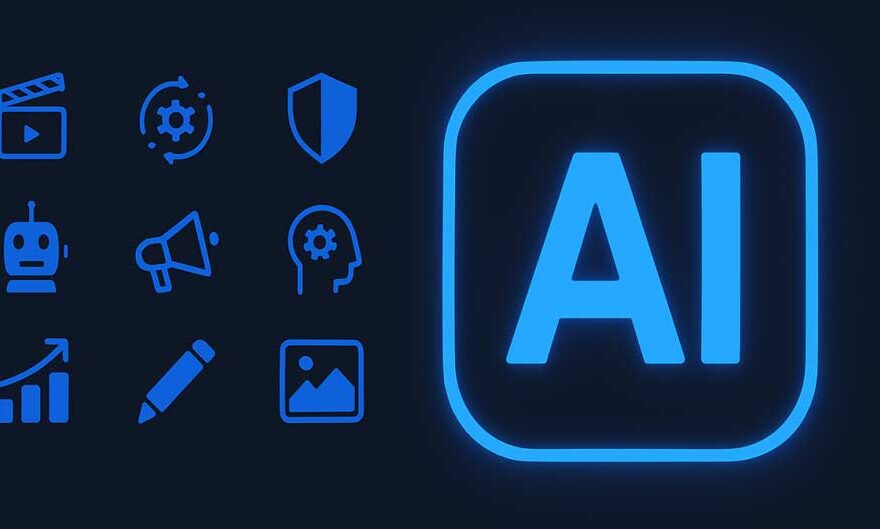Modernizing for AI: Turning Legacy Tech from Roadblock to Runway

AI is no longer just a buzzword: intelligent automation, predictive dashboards, and tailored customer journeys are no longer pilot projects, but core capabilities driving everyday business operations and shaping customer expectations. Inside many firms, though, boardroom ambition meets server room reality. Executives crave the lift AI can deliver, yet their core systems simply can’t carry the weight.
McKinsey’s 2023 Global Survey on AI shows only 11% of companies have taken AI beyond proof-of-concept, despite an expected 20-30% EBITDA boost for those that do. The primary obstacle is an aging tech stack that was never designed for AI features. Rigid code, scattered databases, and thin data pipelines leave algorithms starved of fuel.
Before mapping the next use case, leaders must ask: Can the infrastructure shoulder it? Are data streams clean and shareable? Will established workflows bend to automation? Too often, the candid answer is no, so modernization becomes the real first milestone on the AI roadmap.
The Hidden Costs of Legacy Infrastructure in the AI Era
Legacy systems, including outdated platforms, monolithic applications, and siloed data, continue to keep the lights on, but they hinder innovation and slow down delivery. The price is high. Deloitte estimates that 60-80% of an average IT budget is swallowed by maintenance. Those sunk costs starve modernization funds and push strategic projects to “next quarter.” Meanwhile, the opportunity cost mounts: clunky systems can’t process real-time data or tap modern APIs, making AI a distant dream.
Security looks worse. Old environments lack modularity, which delays patches and widens attack surfaces. In retail or healthcare, where uptime and privacy are existential, that exposure is hard to insulate against.
Legacy tech isn’t merely inefficient—it’s a liability.
Why AI Demands a Strategic Approach to Modernization
Fragmented systems, clashing data schemas, and aging architectures can sink even the best-funded initiatives.
Strategic modernization goes beyond “lift-and-shift” to the cloud. It rebuilds for AI needs—real-time data ingestion, elastic compute, and friction-free integration. Picture a retailer hoping to forecast demand: those models need instant visibility into inventory, sales, and logistics data, yet each set is often locked in a different legacy silos.
PwC’s 2024 Global AI Study echoes this: 86% of leaders cite infrastructure and data hurdles as the top drag on AI ambitions. Rushing ahead without fixing them usually ends in frustration.
Modernization should therefore chase clear business outcomes. Whether you want smarter operations, hyper-personalized customer journeys, or predictive maintenance, supporting systems must align; otherwise, AI becomes just another silo.
Domain Expertise: The Missing Gear in Many AI Rollouts
AI may be horizontal in theory, but value is carved out vertically. Off-the-shelf models often miss the context that turns insight into action. That’s why domain expertise matters.
Partnering with developers who work in your sector means more than renting coders. Domain-specific providers bring tailored strategies and tested architectural patterns that accelerate results. They also help chart the roadmap of what to automate first, how to phase integrations, where to measure ROI, and reduce the odds of endless pilots.
For instance, in retail, success hangs on timing promotions, tailoring offers, and syncing supply chains. Collaborating with a retail software development company means you can obtain a custom-built AI-powered solution that integrates with POS systems, dynamically optimizes pricing, and forecasts demand with seasonal nuance, delivering value that off-the-shelf AI tools often miss.
The right partners don’t merely code; they co-drive transformation.
Modernization Roadmap: Guiding the Move from Legacy to AI-Ready
The leap doesn’t have to start with a blank check. The savviest transformations target high-value pain points and iterate on them.
- Begin with a system audit
Which applications hoard data, throttle processes, or resist integration? Rank them by business impact, then invest where modernization unlocks quick gains: lower costs, faster decisions, happier customers.
- Think modular
Instead of rewriting everything, wrap legacy apps with APIs, decouple high-traffic features into microservices, and shift discrete workloads to the cloud. This staged approach limits downtime and frees bandwidth to test AI use cases. Bain & Company notes that firms adopting phased modernization are three times likelier to capture early AI wins.
- Fortify data quality
Establish clear data ownership, implement modern catalog and lineage tools, and insert quality checks at every point of ingestion. When your data is reliable, pilots turn into products—and executives see proof that modernization pays.
- Adopt real-time visibility
Start with high-value feeds: point-of-sale transactions, sensor readings, click paths. Expose them through documented APIs, allowing teams to experiment quickly. Real-time visibility reveals patterns batch jobs miss and helps models react to demand swings before they dent revenue.
- Embed DevOps and MLOps
Frequent, automated releases cut risk and speed feedback loops. Introduce version control for datasets, automated testing for models, and continuous integration pipelines that deploy to staging environments first. This discipline transforms AI into repeatable engineering, rather than one-off heroics, giving stakeholders confidence that each update will enhance production systems.
- Measure, learn, and scale
Set baseline KPIs around cost, speed, and customer impact. Run small A/B trials, share results transparently, and shut down ideas that stall. Wins should graduate to a governed production environment with named owners and quarterly performance reviews. By operationalizing measurement, you show that modernization is more than a tech upgrade—it’s a reliable growth engine.
- Prioritize change management
Technology shifts fail when people feel sidelined. Communicate the modernization vision early, map how roles will evolve, and celebrate quick wins. Offer reskilling opportunities for employees whose daily tasks will change, and create feedback loops so frontline insights shape the rollout. Treat culture as architecture: without a shared mindset of experimentation and life-long learning, even the most elegant cloud stack will struggle to deliver sustainable AI impact.
Final Thought: Future-Proofing Isn’t Optional
AI isn’t just another tech trend; it’s a new operating model. Companies operated on legacy stacks risk losing ground, not for lack of vision but for lack of execution.
Modernization is now a strategic discipline. It fuels data-driven decisions, faster pivots, and durable growth. More importantly, it ensures that when the next AI opportunity appears, you can seize it rather than study it.
The best day to start was yesterday. The second-best is today.


